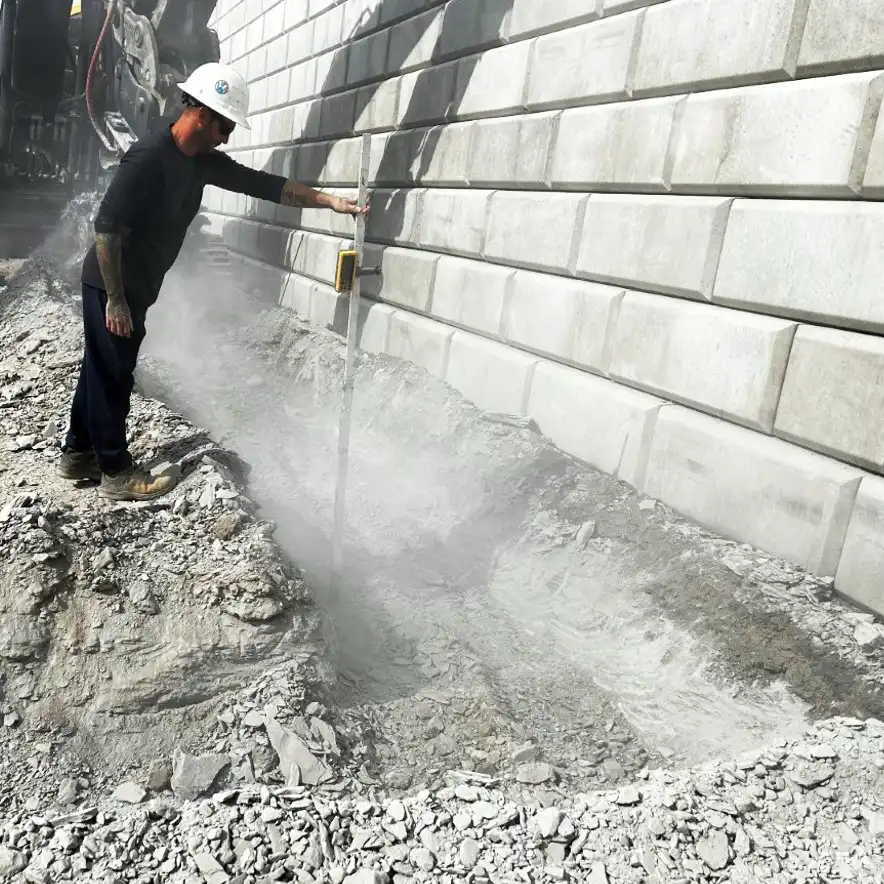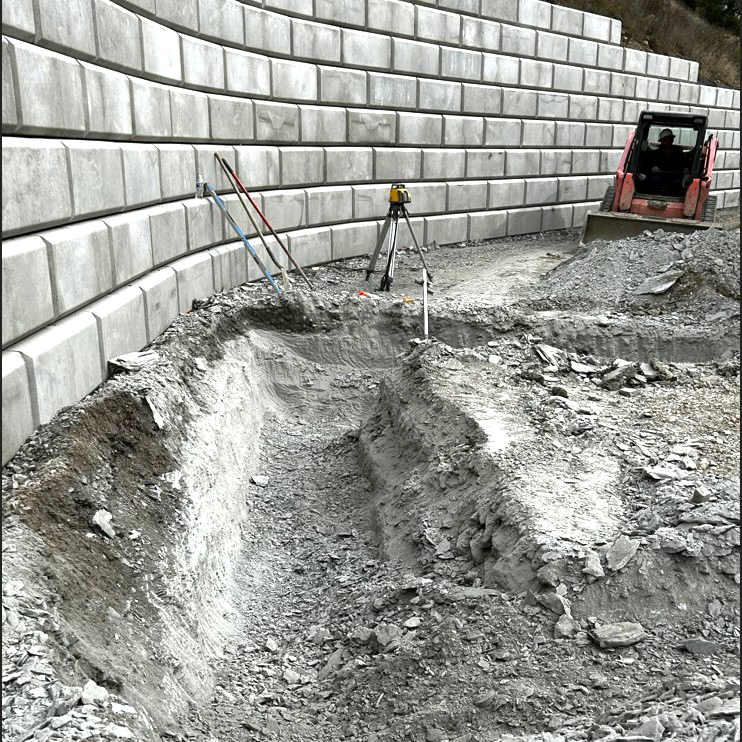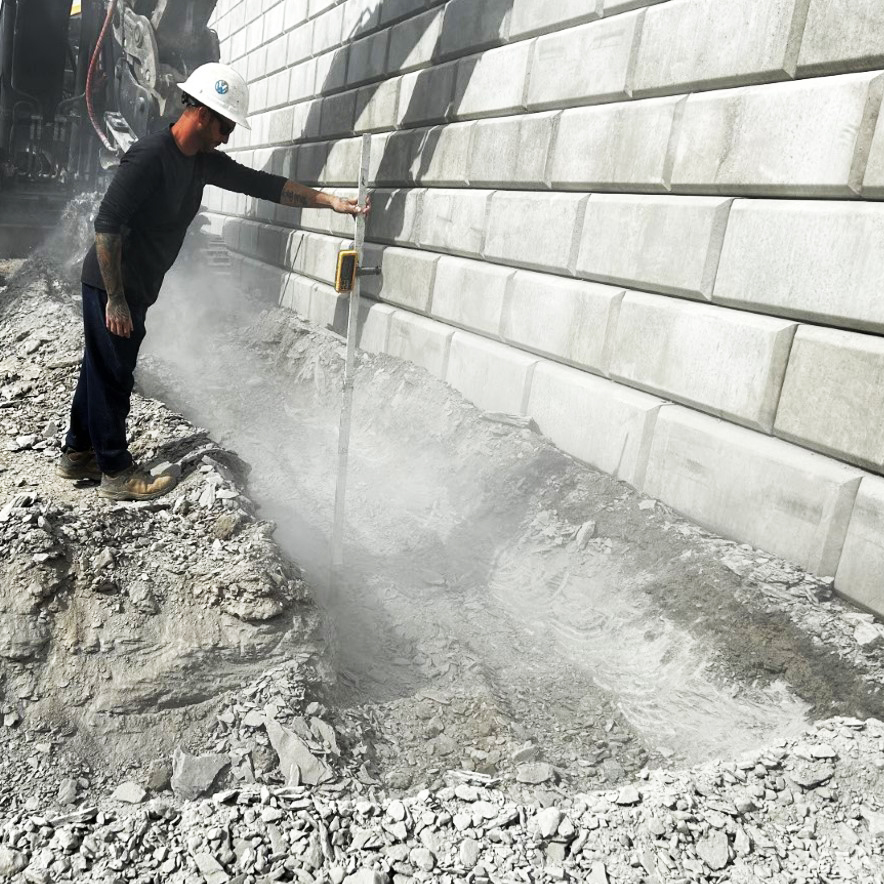Low-Impact Trenching Adjacent to Retaining Wall

In the Appalachian landscape of Western Pennsylvania, where shale rock formations dominate the terrain, construction projects often face unique challenges. Recently, on a job site south of Pittsburgh, a Volvo EC300 equipped with a D30 Rockwheel attachment proved its worth in a remarkable way. It demonstrated low-impact cutting right at the base of a retaining wall, showcasing its precision and efficiency.

Engineers faced a dilemma when they needed to excavate the shale rock adjacent to a sensitive retaining wall. Hammering was not an option, as it posed a significant risk to the wall's stability. Instead, they opted for the Rockwheel, which offered a cleaner, quieter, and more controlled alternative. Workers on site, no doubt, appreciated the absence of the deafening hammering sound!
What sets the Rockwheel apart is its ability to perform surgical rock removal. In this case, the customer executed a plunge cut to keep the trench narrow and clean. The Rockwheel's rotary cutting mechanism, with teeth set at a 45-degree angle, effortlessly ripped through the layers of shale rock, taking full advantage of the natural formations. This method not only preserved the retaining wall but also allowed the cut material to be reused immediately on other sections of the project, filling in low spots.

The success of the Rockwheel in Western Pennsylvania's shale-rich environment demonstrates its efficiency in handling fractured, layered rock. It's no surprise that when dealing with such challenging terrains, Rockwheels consistently prove to be the superior choice.
Read more about low-impact excavation on our Applications information pages
